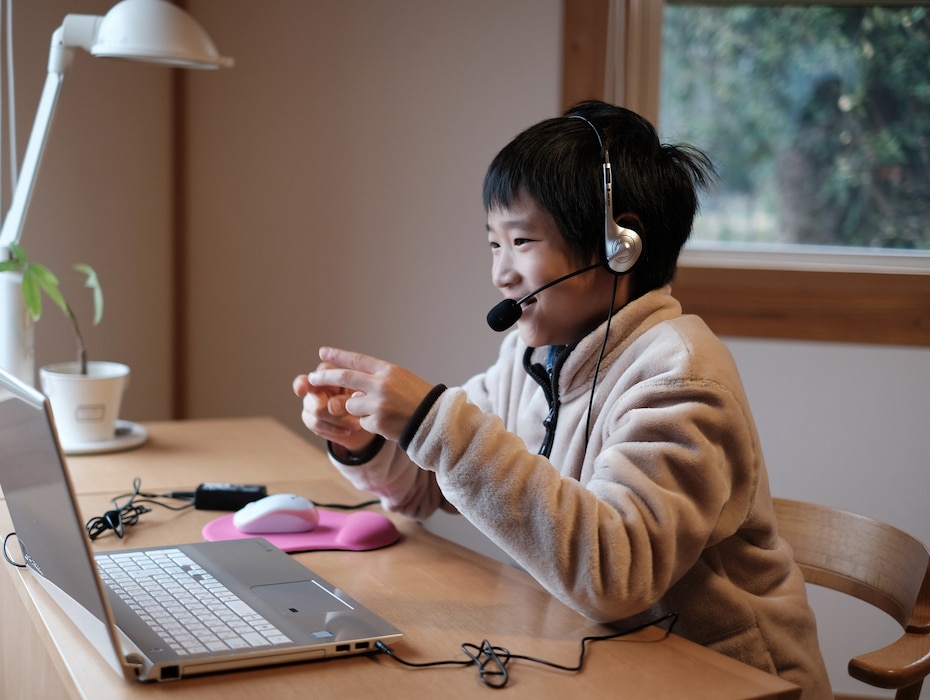Highlights:
- Due to the COVID-19 pandemic, teachers and students had to figure out how to adapt to a new learning environment on the fly.
- Students’ experiences with remote learning include advantages and challenges.
- Communications can play a role in improving the quality of remote learning.
👩🏫 💻 📚 Need a refresher on remote learning best practices? Grab our eBook for tips, techniques, and tools.
As schools across the US make the decision to shut down for the rest of the academic year, students and teachers continue to undergo a crash course in remote learning. The COVID-19 pandemic disrupted the education system so abruptly that schools had little to no time to prepare, leaving teachers and students to figure out how to adapt to a new learning environment on the fly.
K–12 students have learned a lot about remote learning in the last few months. Some students miss the social aspect of traditional education, while others thrive from learning at their own pace. Some have also struggled to create a balance between school life and home life and communicate with their teachers.
Stay informed with RingCentral
How communications can improve the quality of remote learning
A recent article in The New York Times highlighted students’ experiences with remote learning, including its advantages and challenges. Below, we summarized the key points students discussed in that article and identified how communications can play a role in improving the quality of remote learning. Here are the key themes we found:
1. A lack of structure can demotivate
Unlike in school, where students have regimented class periods and lunch breaks, remote learning allows students to largely create their own schedules. While this might sound like a kid’s dream scenario, many students find the lack of structure challenging.
For example, some students learning from home miss having a structured schedule with teachers to support them. Without it, they may procrastinate more, knowing they can work on their assignments at any time. Others feel guilty about being lazy. In addition, many students dislike the lecture format of remote classes, because the lack of interaction makes it harder for them to engage with the material and retain information.
While a lack of structure can be challenging, too much structure can also backfire. Back-to-back video classes without adequate breaks mean students don’t have the chance to switch gears from one subject to another. Sitting for long hours in front of a screen can also be fatiguing.
2. Some students learn better at their own pace
On the other hand, some students have adapted well to the shift. Some prefer the ability to set their own schedules, take breaks when they need them, and work from the comfort of their own home.
At the same time, remote learning allows students to wake up later than they would for a typical school day. The extra sleep helps relieve stress for some and also helps students focus on their work. Studies show that sleep deprivation is most acute among teens who have lots of extra-curricular activities, such as early school schedules, loaded assignments, sports, and part-time jobs. The lack of sleep hinders their ability to perform at school and grades often suffer. But with more flexibility in their schedules, many students have caught up with their sleep debt.
Remote learning also gives some students the opportunity to explore hobbies and interests that aren’t always supported by the public school system, such as learning to code.
3. Slow communication between students and teachers
In a traditional classroom, students can raise their hands or walk over to their teacher’s desk when they need help with their work. In an online learning environment, however, students may have to fend for themselves if they don’t understand the material. In fact, many students can only reach teachers by email, and they rarely get an immediate response. As a result, students may submit homework late and begin falling behind.
Students need a way to reach teachers and classmates in real time to get help when they need it—not hours later. A unified communications solution like the RingCentral app enables secure, direct messaging between students and teachers at any time of the day, as well as class messaging for group discussions and collaboration. If teachers are occupied with other tasks, students can communicate and work together (as they would in school) to tackle harder lessons.
4. Students struggle to define boundaries between school and home
Now that the home has become a place of both work and rest, many students find it tough to create healthy boundaries between their school lives and personal lives. Many at-home students struggle with distractions, such as social media and texts from friends Many also find the increased computer time draining.
There’s an upside to spending extra time at home, however: reconnecting with family. Some students feel grateful for the additional time they get to spend with their parents and siblings, and they appreciate having extra support with their assignments.
It’s important for students to have time between classes to step away from their devices and take a break. Many say this helps prevent exhaustion from video conferencing.
5. Students feel like their workload has increased
Office workers have experienced increased workloads during COVID-19, with 23% of respondents to one survey saying their work has increased greatly. Students also feel the weight, especially with most extracurricular activities now canceled or postponed. Many students feel their schools have assigned more work than normal, because teachers feel their students have more “free time.” In fact, some schools have imposed remote physical education classes, which some students and families find unnecessary.
Many students still have a lot on their plates, even without their extracurriculars. For example, many have to study for standardized tests, such as the Scholastic Aptitude Test (SATs). Others have taken responsibility for helping younger siblings with homework to support their time-strapped parents. Some students simply struggle to navigate the different apps and websites that their teachers use to assign them work.
6. Some students don’t have access to reliable technology
The digital divide is more evident now than ever. According to a 2019 analysis by the Associated Press, about 17% of students nationwide don’t have a computer at home, and 18% lack broadband internet. Without the necessary tools to access online classes and assignments, many students stress about their inability to learn online and the effect it could have on their overall academic performance.
Some schools have addressed this issue by offering curbside pick-up for laptop rentals or mailing paper packets to students without internet access. For example, New York City’s Department of Education handed out 300,000 iPads to students without remote learning access at home. Some US school districts have responded by strengthening Wi-Fi signals at schools so families can access them or deploying Wi-Fi-enabled buses to neighborhoods with poor internet access.
7. Students miss the extracurricular aspects of school
Schools provide a lot more than academics. Unfortunately, remote learning means students miss out on extracurricular activities such as sports, dances, school plays, and graduation. Even simple daily interactions, such as hanging out with friends in the lunchroom or chatting with teachers after class, are hard to replicate online.
For many students, this lack of social interaction is one of the biggest challenges of remote learning. While video calls and chats help students stay connected with classmates and teachers, many feel their teachers don’t leverage these tools effectively. For example, some teachers only use online learning platforms to post assignments and host lectures, rather than allowing students to discuss their work in class and ask questions.

Helping students adapt to the “new normal”
Clearly, the transition to online learning is not without its challenges. Now that we know how students feel about this new learning environment, however, we can build better remote learning solutions.
One consistent issue students face is the lack of communication. Students can’t reach teachers or classmates when they need them most, and video conferencing is often not enough to fully understand lessons. Similarly, teachers need a means of communicating that’s quick to learn and enhances the teaching experience.
| K-12 schools can get messaging, video, and phone for free. Click here to see what unified communications can do for your school. |
The RingCentral app offers messaging, video, and phone for students, teachers, and administration, allowing communication to flow in all directions. Students can instantly and safely connect with classmates and teachers to get the academic help and social interactions that they miss without compromising their personal information. Teachers can also separate classes into groups where students can easily access lessons, resources, and assignments.
Originally published May 07, 2020, updated Jul 25, 2024











